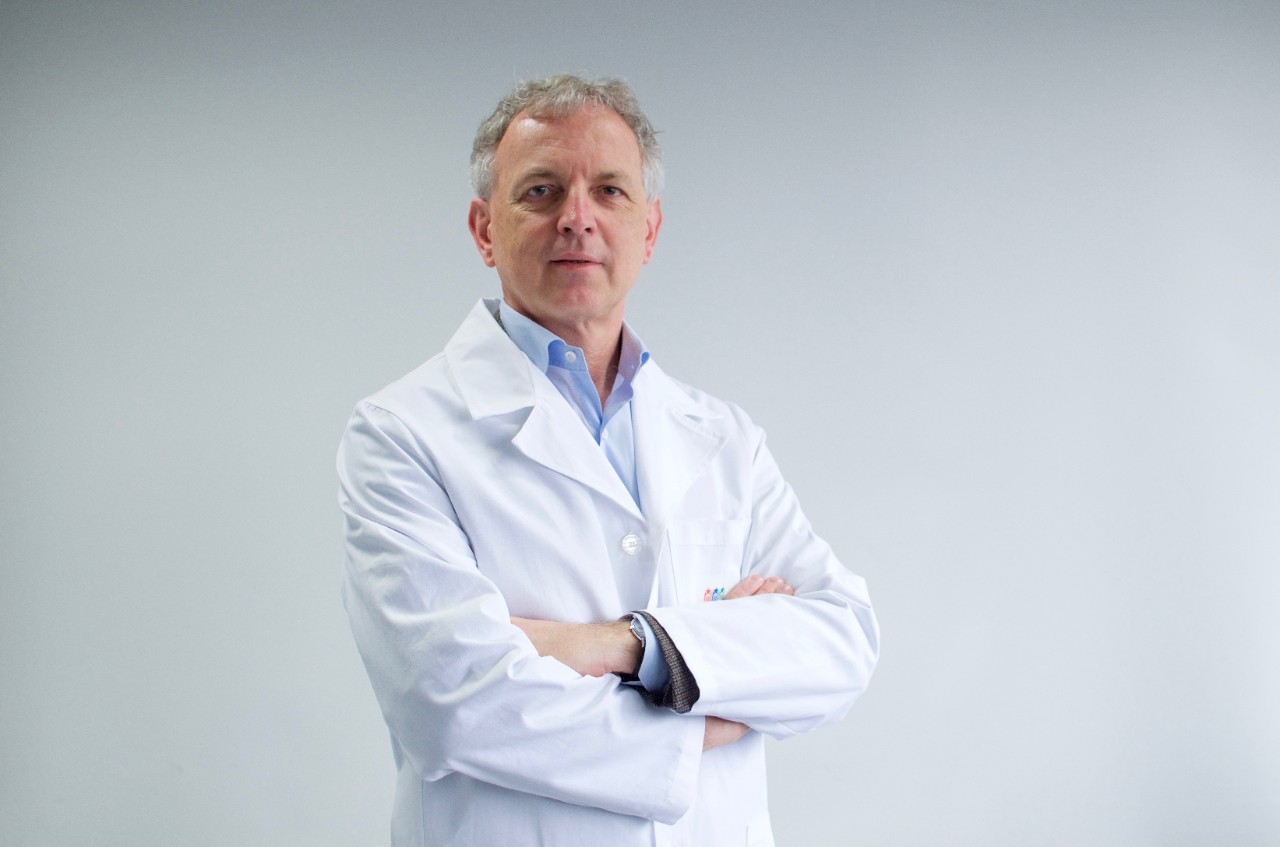From Bench To Bedside
Professor Luigi Naldini and the team at San Raffaele Telethon Institute for Gene Therapy are looking to build a new pillar of medical treatment.
Gruppo San Donato’s Ospedale San Raffaele has a long history of research, producing vast amounts of both primary and clinical research every year. Some of the most exciting research in the field of gene therapy is produced by Professor Luigi Naldini, MD, Director of the San Raffaele Telethon Institute for Gene Therapy (SR-Tiget) – a joint venture between Ospedale San Raffaele and Fondazione Telethon, a non-profit organization – and his team.
Gene therapy is seen by many as being a new frontier in medicine, offering relief for patients suffering from rare, previously incurable conditions and having potential applications in much broader fields such as the treatment of cancer. The SR-Tiget team have already pioneered successful treatments for rare genetic conditions such as ADA Severe Combined Immunodeficiency, Wiskott-Aldrich Syndrome and Metachromatic Leukodystrophy and have now expanded their work both on the basic research side as well as on the clinical side of things with a new clinical trial on beta-thalassemia gene therapy which Naldini describes as being “a major advance” for the institute due to the fact that while it is “still a genetic disease, it affects many people so the potential impact of a new therapy is going to be significant.”
Thalassemia is particularly prevalent in the United Arab Emirates where it is estimated that one in twelve carry the gene. Indeed, as medical care in the country improves, the healthcare costs associated with the disease have increased as patients live longer and thus suffer more complications. Naldini explains that the SR-Tiget team has treated seven patients with promising results. “Patients who are affected by the major form of the disease require very frequent blood transfusions and additional treatment.” The treatment, a form of gene therapy involves the harvesting of blood stem cells from the patient, modifying it with a vector to replace the global gene and then re-introducing them to the patient. After treatment, Naldini says that the team has seen “a significant reduction of transfusion requirement” all the way up “to independence” with the best responding patients being “essentially transfusion free” meaning that their quality of life improves significantly.
Naldini cites the thalassemia trial as an example of the clinical development the institute carries out. In terms of pre-clinical work, he says, they have “an advance in gene editing technology” that they see as being their new approach to the field. Describing it as a more precise form of genetic medicine, Naldini explains that “in conventional gene therapy we replace a functional gene which is randomly inserted in the genome so we don’t have full control of the procedure.” However, “in gene editing we can specifically modify a sequence for us to correct a mutation or insert a new gene in a precise location.” Granting a significant level of precision and control allows clinical scientists to target exactly the parts of a patient’s genetics that cause illness and correct them. “A sort of nano surgical approach if you will.”
Gene therapy using the patient’s own stem cells presents a great hope for thalassemia patients as it may eventually offer a significantly safer form of treatment than the alternative of transplanting donor cells. Patients, especially children, says Naldini “could have a transplant from a donor but only some patients have a proper match and also transplant has a significant risk, especially of graft versus host which can be lethal.” If the transplant is successful, he continues, “essentially the child is cured.” However, as thalassemia is not an “immediately lethal” disease, many families will not opt for a transplant due to the risks involved. With gene therapy however, “because it uses autologous cells there is no such risk so - potentially - it could be a very valuable strategy.”
Even before the much vaunted discovery of CRISPR, Naldini’s team at the San Raffaele Telethon Institute were busy working on gene editing techniques. Indeed, he is keen to highlight the fact that they have made some key advances in the field and now “have a protocol for doing gene editing in hematopoietic stem cells” which, he hopes, will be applied to “some primary immune deficiencies where standard gene therapy would be too dangerous” due to the fact that “the gene has to be very carefully controlled when it is functional. So rather than adding a functional gene we want to fix the original mutation.” Naldini added that the protocol is now being scaled up and adapted for clinical application.
Perhaps the most intriguing potential application of gene therapy is in the field of cancer. While Naldini stresses the fact that it is not yet “in the clinic” he appears optimistic saying that the team has “promising data in the pre-clinical model.” Much like the other therapies discussed, the research still focuses on hematopoietic stem cell gene therapy but rather than replacing a functional gene when it is not working, Naldini and his team are adding a new function to the cell or, as he puts it, “empowering the cell.” In this case, they are empowering it to fight cancer.
The key, he explains, is that the novel gene that is added to the cell (an anti-cancer gene) cannot be expressed throughout the progeny of the stem cell as it would be too dangerous. As such, they “have designed a system by which we modify the stem cell but only the progeny which goes into the cancer site will turn on the gene” meaning they have a “localised or targeted anti-cancer gene delivery.” It is a form of immunotherapy, “another of those very ‘hyped’ concepts and we are using gene therapy to elicit an immune response at the tumor site. We are very excited because we’ve seen in tumor models in mice, the induction of powerful anti-cancer immunity.” Given the promising results the team have seen so far in their research, Naldini hopes to be able to start a clinical trial soon.
Despite the rarity of genetic diseases, Naldini is well confident about the future of gene therapy. Noting that while individual genetic diseases are rare, there are still a great number that can be treated with the technology. Beyond genetic disease however, he sees a place for stem cell gene therapy in the treatment of cancer as well as infectious diseases. There is “a lot of effort around T-cell for cancer and these have broad applicability” and this has, continues Naldini, put gene therapy back on everyone’s agenda. “Using the T-cell to fight disease could be applicable to many things.”
In principle, says Naldini, gene therapy treatments are “easier” transplants than others. As such, he stresses the fact that with some additional training, transplant centers can also offer gene therapy. Even countries with less developed healthcare systems, he says, can take advantage of the advances in gene therapy as there is little need to have patient care and cell processing at the same site due to the addition of a freezing step in the cell product manufacturing. As such, treatments could conceivably be administered around the world in regions where diseases are more prevalent.
Healthcare systems will likely have to find a way to cope with the advent of gene therapy as, while it can reduce overall expenditure due to the fact that patients only require one treatment to deal with the condition rather than a long period of many treatment episodes over their lifetime to simply manage symptoms - the treatments are very costly upfront. There is, says Naldini, “a lot of effort to figure out new modalities of paying” suggesting payments may need to be spread out over time.
Naldini’s institute is embedded within the Ospedale San Raffaele. Indeed, the active clinicians who actually administer the therapy are among the principal investigators. “From a very early stage we include the physicians in our work. This is really a common path we take. That’s been a key to success for us - involving them from the early stages.”
Clinical trials are the key to developing useful treatments, as such, Naldini underlines the importance of “getting that feedback from physicians to see what more can be done. We really look at doing this from bench to bedside.”


